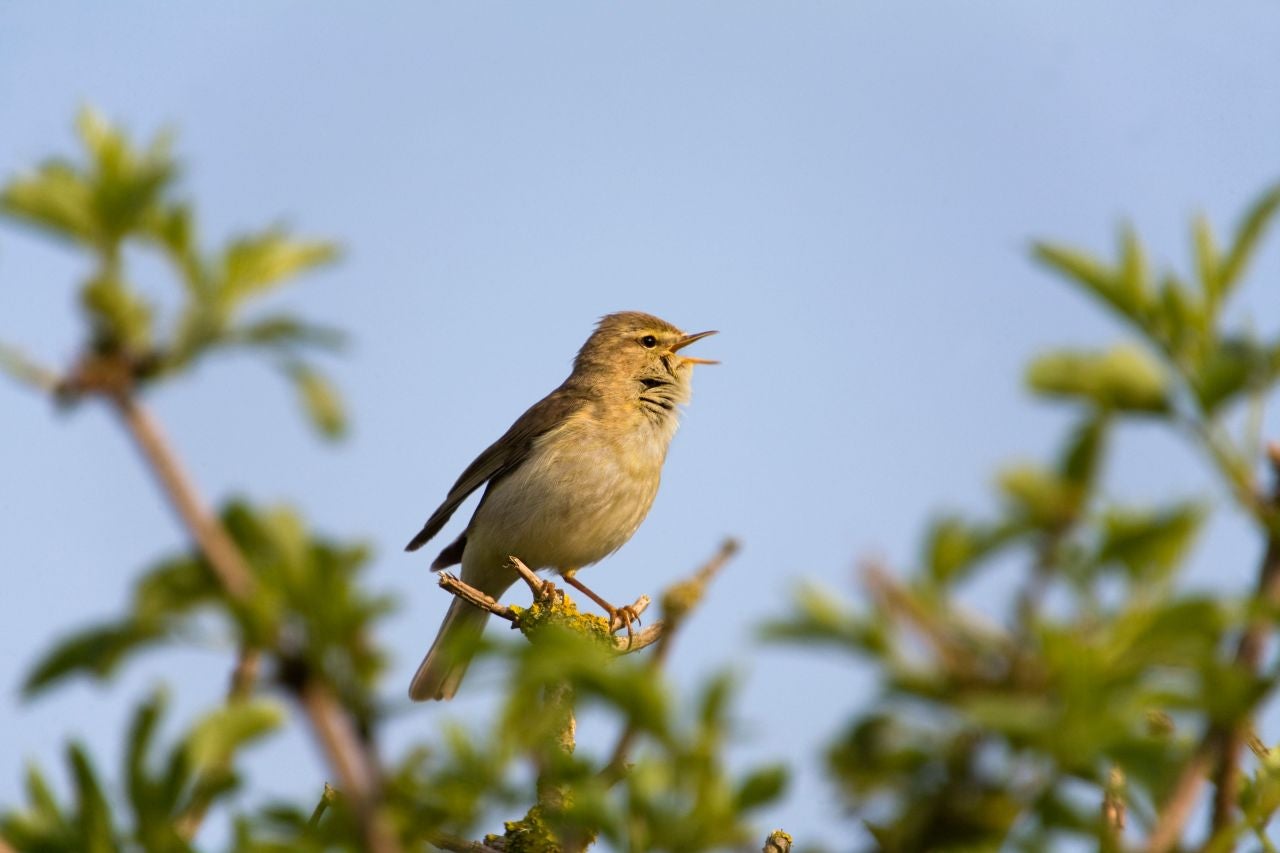Nature Studies: Scotland rules the roost as home of summer birds
The willow warbler is leaving England behind and reappearing up North

Anglo-Scottish rivalry takes a completely new turn. In a surprising story of contrasting wildlife fortunes, southern England is rapidly losing some of its most attractive summer birds, from swallows to willow warblers, while at the same time, Scotland is gaining them.
It’s not that birds are quitting the South of Britain to go and nest in the North. Rather, the southern populations of several species of summer visitors are rapidly declining, while their northern populations are expanding substantially. The striking and so far unexplained divergence has been revealed by the magnificent new atlas of British and Irish birds, all 700 pages of it, which has been six years in the making and is published next week.
It displays a growing North-South contrast in abundance, over the past two decades, in at least eight species – swallow, house martin and sand martin, willow warbler, garden warbler and grasshopper warbler, plus tree pipit and cuckoo. (Other species are showing signs of this, but it is in these eight that the shift is clear).
Scotland, long seen in bird terms as the grandiose home of the golden eagle, is now a much better place than the Home Counties to hear two of spring’s most delicate sounds – the musical double note of the cuckoo and the silvery cascade of the willow warbler – and to witness the exhilarating springtime sight of swallow acrobatics.
The population of the willow warbler, for example, has declined by 28 per cent in England since the early 1990s but in Scotland it increased by 33 per cent over the same period. I personally find willow warblers harder and harder to encounter in my own patch in Surrey, but on an Easter holiday on Skye a couple of years ago, they were singing in every birch tree. You couldn’t get out of the car without hearing the descending song: seep-seep, sip-sip, sep-sep, sap-sap, sup-sup. It was charming to a degree but it made me realise how much I was missing it back home.
Over the same period, the cuckoo declined in England by no less than 63 per cent and it is missing now across much of the South. But over Scotland as a whole, while there was a total decline of 5 per cent, in some areas such as the Highlands and Islands there was a notable growth in numbers. (On the Isle of Eigg a few years back, I saw seven cuckoos in a morning).
Swallows too are increasingly thin on the ground in the South-East of England but increasing north of the border, and the same can be seen for its hirundine cousins, the house martin and sand martin.
These shifts are vividly displayed, with green for losses and red for gains, in the maps of Bird Atlas 2007-2011 – the most complete overview of bird distribution and change in Britain and Ireland ever put together. Produced by the British Trust for Ornithology with BirdWatch Ireland and the Scottish Ornithologists’ Club, the atlas examines the breeding and wintering fortunes of nearly 300 species over the 2007 to 2011 period, as noted down by 40,000 volunteer observers who between them contributed 19 million records. More than 99 per cent of the land surface of both Britain and Ireland has been covered.
The resultant snapshot of the present is engrossing, but the real value is in the contrasts the atlas affords with the two previous bird atlases of the British Isles, done for the periods 1968-1972 and 1988-91. What results, says the BTO’s director, Andy Clements, is “a 40-year story of change”.
There are changes in all directions. An arresting one is the spread eastwards of a pair of species once persecuted by gamekeepers – the buzzard and the raven. Two decades ago they were largely confined to the west of a line drawn from the Pennines to Southampton; now (perhaps because persecution has ended) both birds have spread all over England.
There are many such: the hobby, the dashing summer falcon, is moving steadily northwards in distribution, while the nightingale is shrinking back remorselessly towards South-East England and its stronghold in Essex, Kent and Sussex. In terms of sheer increase, the prize is taken by the little egret, which at the time of the last atlas did not breed in Britain; now there are about 700 breeding pairs. But it is the English- Scottish shift of the willow warbler et al. which is most remarkable. All eight birds concerned winter in sub-Saharan Africa, and it is very probable that this offers a clue to what is happening, although it has not been teased out yet. Climate change, affecting the hatching of their caterpillar food, may also be playing a role.
Yet whatever the cause, there it is in the maps. “We have removed observer bias and we are sure this is a real phenomenon, and a notable one,” said co-author Dr Simon Gillings. Have a look for yourself from next week. It is the most riveting bird book produced in Britain for years.
Join our commenting forum
Join thought-provoking conversations, follow other Independent readers and see their replies
Comments